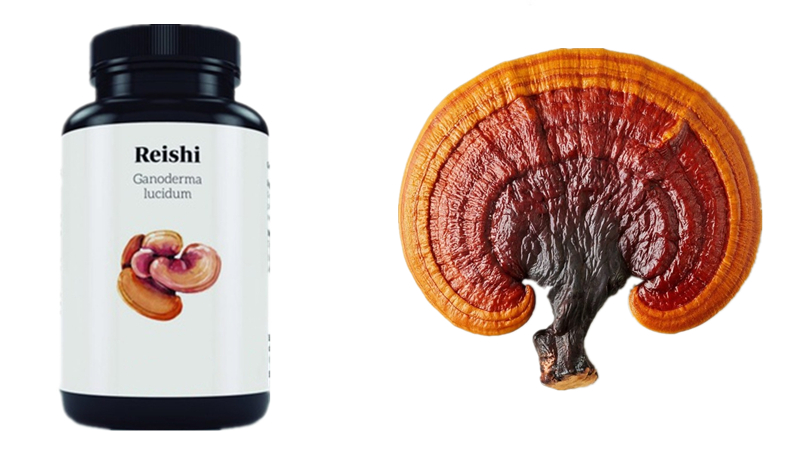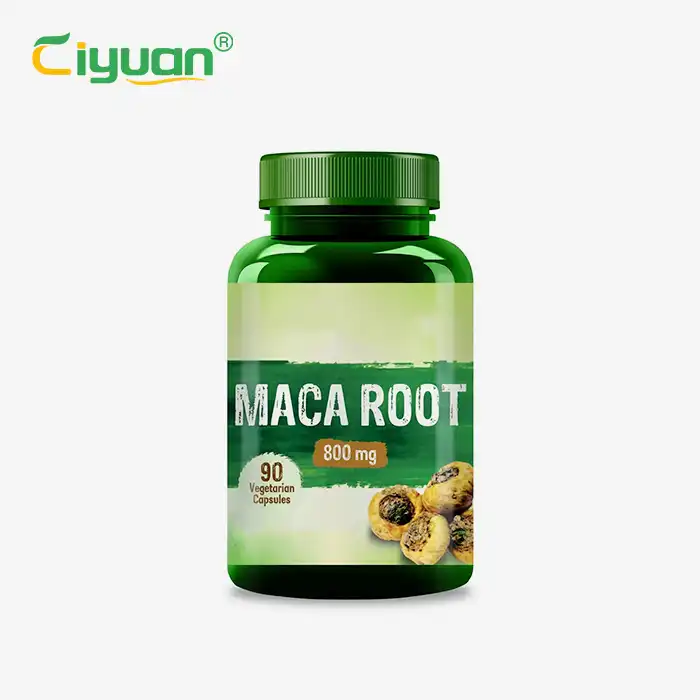How many teaspoons of reishi powder per day?
 2025-11-14 11:09:51
2025-11-14 11:09:51
1. Common Serving Portions observed in the market.
Speaking about the quantity of teaspoons of Reishi mushroom bulk per day, it should be stressed that various brands, extraction grade, and methods of preparing a particular formulation have varying suggestions regarding serving. In general consumer goods the generally recommended range is as shown on product labels:
1/2 teaspoon per day
1 teaspoon per day
Until 2 teaspoons a day, according to the strength of the powder.
These sums are general industry trends that are not related to health outcomes. They are merely a mirror of what manufacturers prefer to use depending on the intensity of flavors, what they want to use, and the concentration of their powder that occurs naturally.
If you’re intrigued by Ciyuan Bio, Claim your free sample today! Need technical support for formulation or OEM/ODM solutions tailored to your brand? Reach out to us now or contact selina@ciybio.com.cn —we’re ready to collaborate.

Reishi mushroom bulk
Product Name: Ganoderma lucidum tablets
Item form:tablets
Specifications: Customized
MOQ: 100 Bottles
Packing: 100bottles/carton or Customized
Certificate: ISO22000; HALAL; KOSHER; FDA
Shipping: Express;Sea; Air
Payment:TT;LC;West Union;Paypal;Alipay
Samples:1 bottle free sample for test
Shelf life: 24 Months in The Cool Dry Place
All of our products can be customized with raw materials and finished products such as capsules, tablets, pills, and small packaging according to your requirements! Ciyuan can also do free design,OEM packing, and private label. Our plant extract are crafted with your unique needs and are packed with the power of plants. 100% vegan, gluten- and lactose-free.
Reach out to us and Claim your free sample today!
2. Dissimilarity between Fruiting-Body Powder and Extract Powder
The amount of teaspoons to be taken usually varies depending on the kind of reishi ingredient:
Fruiting-Body Powder
Prepared using dried mushrooms of reishi.
It contains natural fibers and complicated plant materials.
Taste is down-to-earth and a bit bitter.
Lower concentration of 1-2 teaspoons per day is usually used in most products.
Hot-Water Extract Powder
It is made by processes of hot-water extraction and spray drying.
More polysaccharides and soluble.
Intensified than unrefined mushroom powder.
Normal serving sizes include 1/2-1 teaspoon/day.
Dual-Extract Powder
Prepared with hot-water and alcohol.
tend to be purer and more bitter.
Administered often in smaller doses, i.e. 1/4-1/2 teaspoon daily.
The various extraction procedures have a big effect on the amount of powder consumed. The Brands control the size of the serving to obtain the required concentration and taste.
3. Flavour in International Applications.
The flavor of Reishi mushroom bulk is quite unique since it is very earthy and at times bitter. This is a feature that influences the design of serving suggestions by companies. In most of the functional drinks and instant beverages, the brands begin with small portions (1/2 teaspoon) so that the drinks will still taste good and to enable consumers to add the powder in:
Coffee
Tea
Cocoa blends
Smoothies
Oatmeal or yogurt
Plant-based milk
Since the aspect of taste is a significant factor in product satisfaction, companies tend to suggest that mild servings which can be changed according to individual taste.
4. Categories of products and their tendencies of serving.
The amount of reishi used in the various types of products is usually varying. Knowledge of these categories assists in understanding why a certain brand will prescribe a higher or lower teaspoonful of something compared to the other brand.
a. Instant Lattes and Drinks.
These products tend to mix reishi powder with cocoa, coffee, coconut milk powder or any other flavoring agents. The servings are usually 1/2 -1 teaspoon, which is a combination of flavor and smoothness.
b. Mushroom Wellness Blends
Multi-mushroom powders with reishi, chaga, lion’s mane or cordyceps tend to be low in each ingredient. Reishi can be served at 1/4-1/2 teaspoon equivalent.
c. Smoothie or Superfood Powders.
Since the taste is less noticeable in smoothies, the amounts may be slightly increased, up to 1-2 teaspoons.
d. Culinary Applications
In recipes where they are used as a soup ingredient or as a broth or a vegetarian dish using mushroom preparation, quantities are highly variable. It is used in many recipes and in 1 teaspoon or more, depending on the taste.
These differences demonstrate serving size is not a standard but an industry practice depending on the type of product and experience of the consumer.
5. Issues that Determine the amount of Reishi Powder that People intend to use.
The teaspoons of consumption consumed by consumers per day depends on a number of non-medical factors. These include:
a. Concentration of the Powder
Stronger extracts can be served in lesser amounts, whereas raw powders are consumed in greater quantities.
b. Flavor Sensitivity
Individuals who are sensitive to bitterness tend to begin with low sums.
c. Purpose of Use
For example:
The amount of reishi latte that a consumer can use is 1/2 teaspoon.
A person who is adding the powder to smoothies may like 1-2 teaspoons because it is covered in taste.
d. Blending with Other Components.
Reishi powder is often taken in small amounts in a blend in order to prevent overwhelming the formula.
e. Manufacturing Standards
Powders have different densities and solubility which affect the measurement and listing of teaspoons depending on the supplier.
6. The way Consumers usually incorporated Reishi Powder in their daily lives.
Industry-wise, reishi powder has been used in daily activities in very low doses. Some examples include:
Coffee in the morning is combined with a little scoop of mushroom powder.
Evening cocktails with relaxing botanicals and small portions of reishi.
Smoothie bowls or shakes
Single-serving convenience beverage sachets.
The majority of users begin with lower doses and increase depending on taste preference and not with a therapeutic intent.
7. General Industry Guidelines
Although none of them provide any medical advice, most brands include some general advice that would allow consumers to enjoy reishi powder better:
To determine taste, start with one-fourth to one-half teaspoon.
Gradually add on in case the taste is okay and the customer wants more intense combinations.
Consider the label on the product you are extracting, the ratios vary.
Take the powder with food or drinks, so that it is easy to mix.
Take into account the serving size based on the desired culinary or beverage purpose.
These are workable, consumer-focused principles that capture the general usage trends.
8. There is no Standards of Uniformity.
Since reishi is not a controlled medicine, but a natural component, then there is no defined teaspoonful, which is universal and globally accepted. The serving size depends on the manufacturers on:
Extraction method
Concentration level
Intended product category
Taste profile
Market positioning
Target consumers (e.g. coffee drinkers vs. smoothie drinkers)
Therefore, the teaspoons prescribed by a brand may differ considerably across brands.
9. In Doubt, Take the Product Label.
The specific label of the product is always the best source of information in terms of serving amount. The serving recommendations vary according to the strength, extraction ratio and taste profile of the individual powder in a company. Regulations and industry compliance requirements are also portrayed in labels.
Conclusion
The functional-food and natural-supplement industry has an average daily dose of Reishi mushroom bulk between 1/2 teaspoon and 2 teaspoons based on the concentration, flavor and product line. Fruiting-bodies tend to consume more powder, whereas concentrated extracts consume less powder. Taste preferences, the formulation requirements and product design also play a role in the number of teaspoons to be suggestive. As there is no standard usage, the most appropriate would be to follow the instructions in each brand and make changes depending on own preferences and desired culinary purpose.
References
-
Zhang, H. & Lin, Z. Composition Analysis of Ganoderma lucidum Powders. Functional Mushroom Review, 2022.
-
International Natural Products Association. Guidelines for Mushroom Powder Labeling, 2023.
-
Food Ingredients Global. Market Trends in Functional Mushroom Products, 2024.
Contact us
If you’re intrigued by Ciyuan Bio, Claim your free sample today! Need technical support for formulation or OEM/ODM solutions tailored to your brand? Reach out to us now or contact selina@ciybio.com.cn —we’re ready to collaborate.











